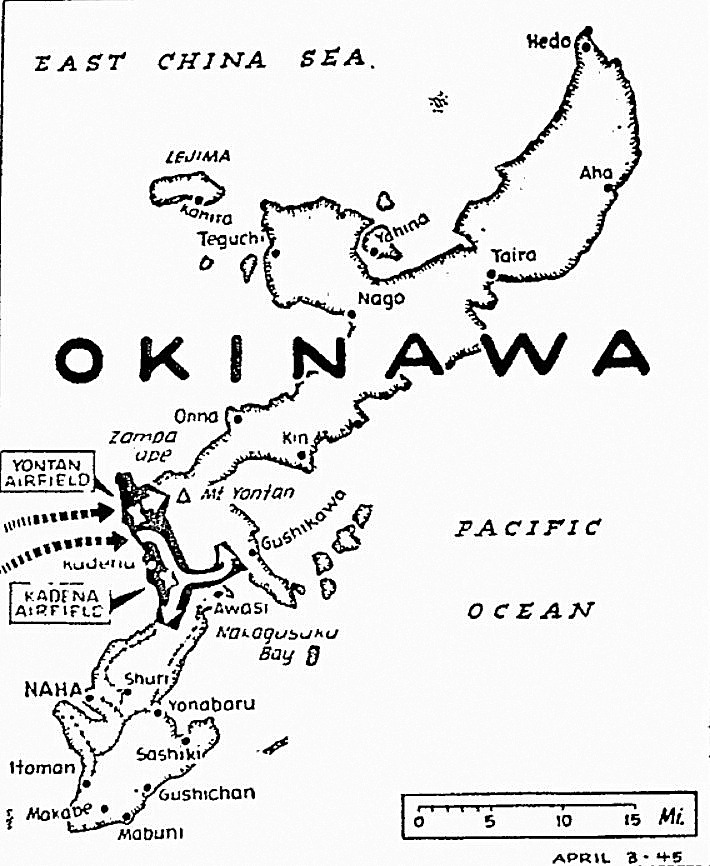U.S. Navy Department (April 3, 1945)
CINCPOA Communiqué No. 320
The Marine III Amphibious Corps and the XXIV Army Corps made rapid gains in all sectors of the lines on Okinawa Island on April 3 (East Longitude Date). In the north, the Marines advanced generally from 4,000 to 6,000 yards reaching the East Coast near Katchin Peninsula and cutting it off. Units of the 7th Infantry Division which had reached the eastern shore of Okinawa the previous day moved southward along the shore of Katsurin Bay on the east coast from a point near the town of Takaesu to Kuba Town. Our front lines in the southern sector at nightfall of April 3, approximated a line from Kuba Town in the east to Chiyunna in the west. Resistance throughout the day was negligible. The advancing troops were supported by gunfire from heavy units of the Fleet. Ships’ guns and carrier aircraft shot down 11 enemy planes during the day. Unloading of supplies continues satisfactorily.
Fast carriers of the U.S. Pacific Fleet attacked targets in the Sakishima Group on April 3.
On March 30-31, Corsair and Hellcat fighters, Helldiver bombers, and Avenger torpedo planes from carriers of the U.S. Pacific Fleet supporting the Okinawa operation inflicted the following damage on enemy forces in the Ryukyus:
Aircraft:
- Seventeen shot out of the air.
- Five destroyed on the ground.
- Nineteen damaged in the air and on the ground.
Shipping:
SUNK:
- Three motor torpedo boats.
- Two small cargo ships.
- Nine small craft.
PROBABLY SUNK:
- One small cargo ship.
- Four small craft.
DAMAGED:
- One motor torpedo boat.
- Four small cargo ships.
- One lugger.
- Fourteen small craft.
INSTALLATIONS:
-
Six submarine pens at Unten Bay, Okinawa, destroyed and another heavily damaged.
-
Mills, barracks, bridges, radio stations, pillboxes, buildings, docks, gun positions and covered revetments destroyed or damaged on Okinawa.
Other installations on Tokuno, Amami, Kikai and Minami, Daito Islands, heavily hit.
Installations on Marcus Island were bombed on April 2 by Army Liberators of the Strategic Air Force.
Planes of the 4th Marine Aircraft Wing attacked buildings, vehicles and barges in and around the Palau Islands on April 3.
During the week ending March 31, 69 Japanese were killed and 13 taken prisoner by U.S. patrols on Saipan, Tinian and Guam in the Marianas.
Navy Search Aircraft of Fleet Air Wing Two made neutralizing attacks on enemy-held bases in the Marshalls on April 2.
